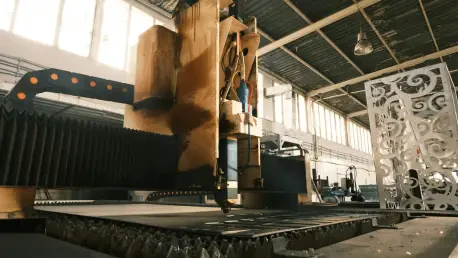Today, we’re thrilled to sit down with Marco Gaietti, a veteran in business management with decades of experience in strategic management, operations, and customer relations. Marco has been closely involved in the strategic initiatives behind the launch of ‘AntOn by Jungheinrich,’ a new forklift brand aimed at the entry-level segment. In this conversation, we’ll explore the inspiration behind this innovative product line, the unique features that set it apart, the technology driving its efficiency, and the strategic partnerships that made it possible. We’ll also dive into the specific needs of the target audience and how this brand aligns with broader industry trends.
Can you share the story behind the launch of ‘AntOn by Jungheinrich’ and what motivated this new venture?
Absolutely. The idea for ‘AntOn by Jungheinrich’ came from recognizing a growing demand in the entry-level segment for equipment that balances cost and performance. We saw an opportunity to cater to businesses that need reliable, straightforward solutions without the complexity or high costs of premium models. Our goal was to democratize access to quality material handling equipment, aligning with our broader mission to drive efficiency and innovation in intralogistics for all types of customers.
How does ‘AntOn by Jungheinrich’ stand out in the crowded entry-level market for material handling equipment?
What sets ‘AntOn’ apart is the deliberate focus on simplicity, durability, and affordability. We’ve designed these products to be user-friendly for operators of all experience levels, while ensuring they can withstand the rigors of daily use. The price-performance ratio is a game-changer—customers get robust equipment at a cost that doesn’t strain their budgets, which is often a sticking point with competitors in this space.
Let’s talk about the electric forklift trucks, the CBH 2.5 and 3.0. What kinds of operations or environments are they best suited for?
The CBH 2.5 and 3.0 are built for versatility. With load capacities of 2,500 and 3,000 kg and lifting heights up to 4,800 mm, they’re ideal for standard warehouse tasks like stacking and transporting goods. Their high ground clearance and large tires also make them adaptable to uneven surfaces, so they perform well in outdoor settings or less polished industrial environments. They’re really a go-to for businesses with mixed operational needs.
Can you tell us more about the PTL 1.5 pallet truck and how its design benefits users?
The PTL 1.5 is a compact powerhouse with a 1,500 kg load capacity. Its small footprint—measuring just 1,550 x 560 x 1,230 mm—makes it incredibly maneuverable in tight warehouse spaces or for outdoor use. It’s also portable enough to be loaded onto a truck for transport. Features like optional stabilizers for uneven terrain and a replacement battery for extended operation ensure it meets a wide range of customer demands with ease.
Why did you choose lithium-ion technology for these vehicles, and what advantages does it bring to the table?
Lithium-ion technology was a natural choice for us due to its efficiency and longevity. It offers short charging times, which means less downtime for operators, and a long service life that reduces the need for frequent battery replacements. Additionally, the minimal maintenance requirements lower the overall cost of ownership, which is a huge plus for businesses focused on keeping operational expenses in check.
Could you elaborate on the partnership that helped bring ‘AntOn by Jungheinrich’ to life?
Certainly. This product line is the result of a strategic collaboration that blends German engineering expertise with highly efficient production capabilities. By combining our strengths in design and innovation with streamlined manufacturing processes, we’ve been able to create equipment that’s both cutting-edge and cost-effective. The synergies in development have allowed us to innovate quickly while maintaining the high standards our customers expect.
Who do you see as the primary audience for this new brand, and what specific needs are you addressing for them?
Our target audience is primarily small to medium-sized businesses or those just stepping into structured intralogistics. These are companies looking for cost-effective, reliable solutions for everyday warehouse and transport tasks. We’re addressing their need for equipment that’s easy to operate and maintain, without requiring a significant upfront investment or complex training.
Looking ahead, what is your forecast for the future of entry-level material handling equipment in the industry?
I believe the entry-level segment will continue to grow as more businesses seek affordable yet efficient solutions to optimize their operations. We’re likely to see increased demand for technology-driven equipment that offers flexibility and sustainability, like lithium-ion powered vehicles. The focus will be on creating products that are accessible to a broader range of companies while pushing the boundaries of innovation to meet evolving needs. I’m excited to see how ‘AntOn by Jungheinrich’ will contribute to shaping that future.









